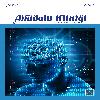Distal Radius Kırıklı Hastada Ultrason Rehberliğinde Bilateral İnfraklaviküler Blok
Ultrasound-Guided Bilateral Infraclavicular Block in a Patient with Distal Radius Fracture
___
- 1. Klein SM, Evans H, Nielsen K, Tucker M, Warner D, Steele S. Peripheral nerve block technique for ambulatory surgery. Anesth Analg. 2005;101:1663-76.
- 2. Marhofer P, Greher M, Kapral S. Ultrasound guidance in regional anaesthesia. Br J Anaesth. 2005;94:7-17.
- 3. Klaastad Ø, Smith HJ, Smedby O, Winther-Larssen EH, Brodal P, Breivik H, et al. A novel infraclavicular brachial plexus block: the lateral and sagittal technique, developed by magnetic resonance imaging studies. Anesth Analg. 2004;98(1):252-6.
- 4. Neal JM, Moore JM, Kopacz DJ, Liu SS, Kramer DJ, Plorde JJ. Quantitative analysis of respiratory, motor, and sensory function after supraclavicular block. Anesth Analg. 1998;86(6):1239-44.
- 5. Franco CD, Salahuddin Z, Rafizad A. Bilateral brachial plexus block. Anesth Analg. 2004;98(2):518-20.
- 6. Pai RV, Hegde HV, Santhosh M, Roopa S, Deshpande SS, Rao PR. Bilateral brachial plexus blocks in a patient of hypertrophic obstructive cardiomyopathy with hypertensive crisis. Indian J Anaesth. 2013;57(1):72-5.
- 7. Sandhu NS, Maharlouei B, Patel B, Erkulwater E, Medabalmi P. Simultaneous bilateral infraclavicular brachial plexus blocks with low-dose lidocaine using ultrasound guidance. Anesthesiology. 2006;104(1):199-201.
- 8. Tekin M, Gürkan Y, Baykal D, Solak M, Toker K. Ultrason rehberliğinde bilateral infraklavikular blok: olgu sunumu. Ağrı. 2010;22(1):41-3.
- 9. Maurer K, Ekatodramis G, Rentsch K, Borgeat A. Interscalene and infraclavicular block for bilateral distal radius fracture. Anesth Analg. 2002;94(2):450-2.
- ISSN: 2149-5254
- Yayın Aralığı: Yılda 3 Sayı
- Başlangıç: 1933
- Yayıncı: Hayat Sağlık ve Sosyal Hizmetler Vakfı
İnmeli Bireylerde Dyna Ayak Bileği Ortezi Kullanımının Denge ve Yürüme Üzerindeki Akut Etkisi
Ömer Osman PALA, Nuriye ÖZENGİN, Tamer ÇANKAYA, Şebnem AVCI, Ramazan KURUL, Hatice ÇANKAYA
Kısa Dental İmplantların Klinik Çalışmalar Üzerinden Değerlendirilmesi
Mustafa Hayati ATALA, Kübra DEĞİRMENCİ
Malign Transformasyon Gösteren Dissemine Peritoneal Leiyomiyomatoz
Nihal BOZDAĞ KAPLAN, Semra GÜRÜNLÜOĞLU, Nusret AKPOLAT
Lomber Disk Hernisi ve Hemogram Parametreleri Arasında Bir Bağlantı Var mı?
Erkan KİLİNC, Emine DAGİSTAN, Yasar DAGİSTAN, Zeliha COSGUN
Postmenopozal Osteoporozda Laktasyon ve İlk Gestasyonel Yaşın Etkisi
Nilgun GULER ŞANOL, Gültekin Adanas AYDIN, Ismihan GURGEN
Nitröz Oksit Korneal Endoteli Etkiler mi? Pediyatrik Hastalarda Prospektif Randomize Bir Çalışma
Ahmet Selim ÖZKAN, Nihat POLAT, Sedat AKBAŞ, Mehmet Rıdvan YALIN
Halluks Rigidus Tedavisinde Üç Komponentli Total Artroplastinin Erken Dönem Fonksiyonel Sonuçları
Kayahan KARAYTUĞ, Eren YILDIZ, Sefa Giray BATIBAY
Diskeratozis Konjenitalı Bir Hastada Anestezi Yönetimi
Türk Romatoid Artrit Hastalarının Hastalıkları Hakkındaki Farkındalık Düzeyi
Gulcan GURER, Gulnur BOZBAS TAŞCI
Yüksek Yağlı Diyet ve Fibronektin Tip III Alan İçeren Protein 5 mRNA Ekspresyonu Arasındaki İlişki
